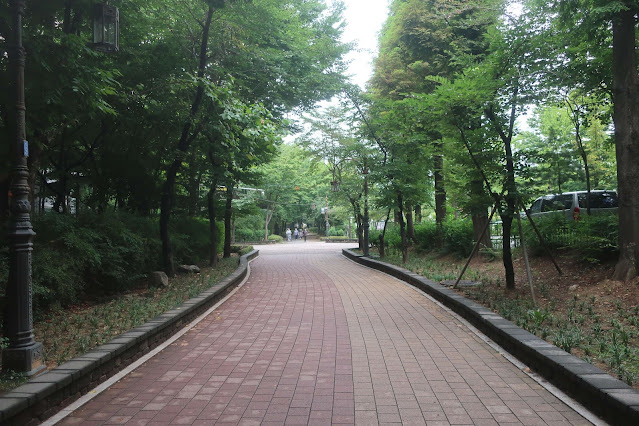On Sunday, I visited Bucheon for the first time in 7 years so I could visit a friend and former coworker. Bucheon was where I first lived in Korea when I arrived 20 years ago (and I wrote a long post about its history up to the 1980s here). I had been struck by certain changes the last time I visited, but it was even more stark this time around. When I first arrived in Bucheon, the Jung-dong New City was still relatively new - the apartments had mostly been built between 1993 and 1995, but a few complexes were finished as late as 1997, making them just four years old when I arrived. A 1 km-long stretch of the main street, Gilju-ro, where subway Line 7 runs now, had vast swaths of empty space on either side when I first arrived. At that time, the north side had only four buildings, and when I left two years later, there were only 4 spaces left. In the meantime, a large section of Sang-dong, to the west, went from empty space to an area full of officetels and shopping complexes in that same time period, which astonished me at the time. In the time since I left, tall officetels have gone up in many places in that area, but on this latest visit, there were two large 50-story apartment complexes, one finished, and one being built, which stood to the east of City Hall, where the old one-story bus station used to be:

The view of them from a side street:

My friend and I walked over to where I used to live, where I knew, if the security guards weren't around, we could get up to the 25th floor stairwell and look out the window, where I took this photo in August 2001.
We had no trouble getting in, so here is the exact same view today. It's incredible that in 2001 City Hall, in the center, dominated the view. The same is not true today:
Here is the uncropped view:
What an unbalanced monstrosity those tall apartments are.
From the same height, looking north. Off to the left and north - surrounding the shorter apartments of Jung-dong New City, are a handful of taller apartments built in the last decade; otherwise the view hasn't changed that much.
My friend noted that in the gap in the apartments where you can see the horizon Gaehwasan and Gimpo Airport - our old neighbourhood - are visible:
We then walked out onto a path between the apartment complexes and took in what had surprised me during my last visit seven years ago - the canopy formed by the tall trees.
Here's the same view from March 2001. Though it's winter, the trees are quite obviously much smaller, having only been planted there eight years earlier, at most. Note that despite all the changes to the sidewalk, curbs, and gardens, the same street light is still there.
For over a year after I arrived, there was a massive construction project that was a mass of red steel girders forming the framework for two buildings. The rumor was that the owner of the construction company had been caught by his wife cheating on her, and the divorce had reduced the amount of capital available to him, stalling the project. I have no idea if that's true or not.
In the summer of 2002, construction began once again, and it was eventually turned into a Hyundai Department Store.
By that point, an empty lot across the street from it had been turned into what is now Emart, but was originally Walmart (under construction below in December 2001).
Present-day Emart and Hyundai Department store, with a new officetel on the right:
And looking east from the same spot stands a wall of 5-story buildings on the left that were mostly absent when arrived and mostly finished when I left Bucheon, as well as, off in the distance, new apartments being built on the site of what was originally Carre Four, then Homever, then Home Plus. On the right, beyond the massive apartment towers, is a row of officetels that was empty space when I left in 2003. Where the apartment towers now stand was an 'Edison Museum' which stood in a one-or-two-story building for a year or so when I first arrived - an odd thing to find in the neighbourhood.
As always, the only constant is change, particularly in a 30-year-old Korean new city.















2 comments:
"30-year-old new city" sounds like an oxymoron, but maybe it's not, given the long lives of cities.
Anyway, really interesting photo essay. Funny to watch the landscape evolve.
Glad you enjoyed it - "New City" was a direct translation of 신도시, which was the name of that area (중동신도시) - there were five such new cities ringing Seoul built at the time (heh - 'ring' - "and five rings there were for cities, which lust after progress"), including Ilsan, Bundang, and... two others. Forget which ones. It would be interesting to use satellite maps from throughout the years and 'animate' them to show how various areas changed and new settlements / apartment complexes appeared. One of the of odd things about Bucheon was that all of the apartments were numbered in the order they were built. Ramshackle ones near line 1 were numbered from 1 to 15 or something (they've since been rebuilt, and I lived in 1520. New apartments no longer follow this code, but it was a pretty easy way to discern the order in which they appeared.
Post a Comment